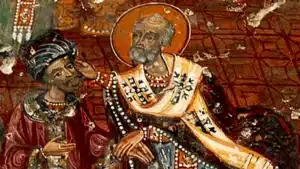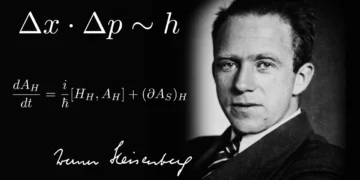In the realm of Christian theology, few concepts have stirred as much debate and controversy as the term “homoousios.” Originating from ancient Greek, the word translates to “of the same substance” or “consubstantial.” Introduced during the early centuries of Christianity, homoousios holds profound significance in shaping the framework and understanding of the faith. Despite its central role, the concept has been a subject of intense theological deliberation and division. This article aims to provide a descriptive overview of homoousios, shedding light on its origins, significance, and the disputes it has engendered within Christianity.
Origins and Context
The term homoousios gained prominence during the Council of Nicaea in 325 AD. The council was convened to address the doctrinal differences that arose within the early Christian church, specifically the nature of Christ. At the center of the controversy was the question of whether Jesus was of the same substance (homoousios) as God the Father or merely of similar substance (homoiousios). The formulation of homoousios became a key defining moment in Christianity as it sought to establish a unified belief system.
Significance in Christianity
Homoousios played a crucial role in the Christian doctrine of the Holy Trinity – the belief in one God existing in three distinct persons: God the Father, God the Son (Jesus Christ), and God the Holy Spirit. By affirming that Jesus was “consubstantial” with the Father, homoousios emphasized the essential unity and equality of the Father and the Son in their divine nature. This concept aimed to counter heretical teachings and provide a theological foundation for understanding Christ’s role in salvation.
Theologians who endorsed homoousios argued that it upheld the traditional understanding of the divinity of Christ. They claimed that Jesus, as the Son of God, had an eternal existence and shared the same substance as God the Father. This affirmation highlighted Christ’s role as the mediator between God and humanity and solidified his divine nature, making salvation comprehensible to believers.
Controversies and Disputes
Despite its intended unifying effect, the introduction of homoousios sparked significant disagreements and controversies within Christianity. A prominent figure involved in these debates was Arius, a presbyter from Alexandria. Arius contended that there was a time when the Son of God did not exist and therefore could not possess the same divine substance as the Father. His views, known as Arianism, challenged the orthodox position supported by homoousios.

The ensuing disputes led to schisms, exiles, and even violence in the ancient Christian world. Emperors, such as Constantine the Great, attempted to resolve these theological differences through imperial decree. Ultimately, the Council of Nicaea affirmed the homoousios formulation, but the debates continued for decades, with subsequent councils refining the language and theological implications of the concept.
Homoousios Asserts Unity and Equality
Homoousios stands as a concept of utmost importance within Christianity’s theological framework. This concept asserts the unity and equality of the Father and the Son in their divine essence, paving the way for a coherent understanding of Christ’s redemptive role. Despite the controversies and divisions it has engendered throughout history, homoousios remains a lasting testament to the profound efforts of early theologians to comprehend and articulate the nature of God and Christ in the Christian faith.

















































































